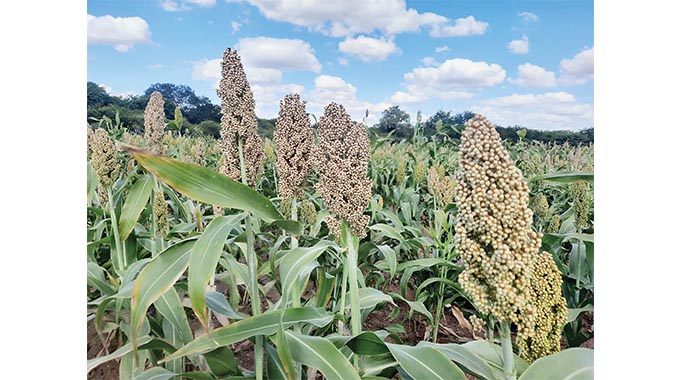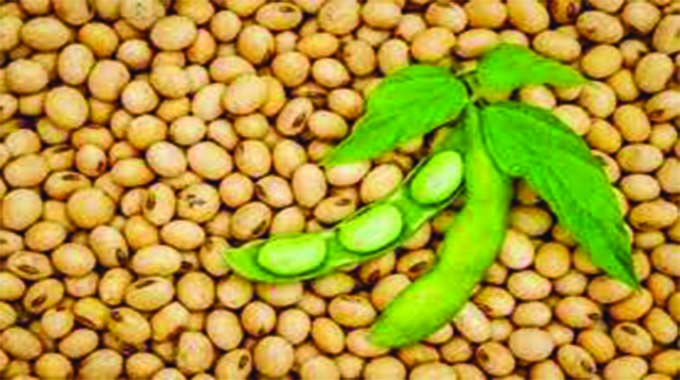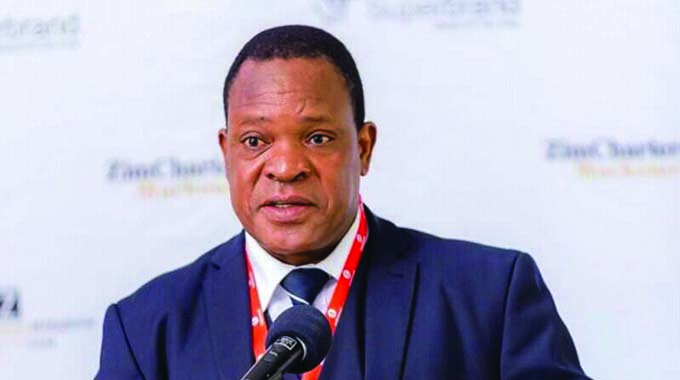COMMENT: No looking back, farming season in full swing

We are a little more than a month into the 2022-23 wet season so farmers are working the land, hard.
It started very well with decent amounts of rainfall spread evenly countrywide. This encouraged growers to intensify land preparation, mobilisation of inputs as well as planting. Nearly 100 000 hectares had been put under maize by December 1, compared to just above 30 000ha during the same period last season.

Sorghum
In terms of soyabeans, 1 415ha compared to 677ha at the same time of the previous season had been planted; sorghum, 2 570ha against 756ha the previous season; cotton, 518ha and tobacco, 53 571ha versus 38 312ha at the same time of the previous season. Under the National Enhanced Agricultural Productivity Scheme, AFC and CBZ had by that time commenced registering farmers, with inputs being availed. CBZ is targeting to support a total of 170 000ha under maize up from 150 000ha in 2021 and soyabeans 20 000ha, while AFC is targeting 65 000ha under maize from 55 000ha last year, soyabeans 5 000ha, traditional grains 2 000ha and sunflower 3 000ha.

Soya beans
Given that rains have been falling since the first update of the season on December 1, the area under crop must be higher now. In addition to planting, growers must be applying top dressing fertilisers, scouting for and addressing any pest and disease infestation.
As is normally the case at this time of the year, the Government on Wednesday announced the pre-planting producer prices for strategic crops – maize, sunflower, traditional grains, soyabean and cotton.
Farmers, said Lands, Agriculture, Fisheries, Water and Rural Development Minister Anxious Masuka will be paid a floor price of US$335 per tonne of maize and traditional grains; US$597.59 per tonne of soyabean, US$687.23 of sunflower and between
US$0.40/kg and US$0.46 of cotton depending on grade. Wednesday’s announcement is critical for any farmer because based on a pre-planting producer price, a farmer can take a decision whether or not to grow a certain crop. It, too, gives them an indication as to how much they will be paid come harvest time.

Dr Anxious Masuka
A floor price enables them to more effectively work out their budgets against the payments they will receive when they deliver their crops to markets. They can make a few other decisions essential in ensuring the profitability of their businesses, as farming is indeed a business.
We are sure that the prices as announced, guarantee a farmer a fair return on their investments. On average, a farmer needs to invest US$1 602, 20 per hectare to realise an average yield per hectare of 5,5tonnes and earn a profit of US$43 per tonne and US$240 per hectare.
This is an impressive return which must motivate our farmers to grow the staple. Also, given that the Government worked out the average probable profit on the basis of an average 5,5tonne yield per hectare of maize, more able growers – the 11-tonne-club, the 15-tonne-club, now we have the 20-tonnne-club – will make real cash considering the pre-planting price announced on Wednesday.
This must stimulate farmers to improve their productivity – harvesting much more per unit area than the 5,5tonnes per hectare and with it, more money. It is an incentive for them to seek to join the prestigious 11 to 20-tonne-club.
To those who are growing traditional grains, we note the Government decided to set their pre-planting producer price at par with that of maize this year. Over the past season or two, they earned substantially higher per tonne than maize growers.
However, we think that the floor price remains fair to them, which must encourage them to work and produce these food crops, whose demand is increasing as the people become more health conscious.

Maize
Soyabean and sunflower farmers are in the money. Almost double the maize pre-planting producer price for those who will plant soyabean and more than double the maize price for those to grow sunflower.
That is large. By setting the producer prices of the oil seeds at this level, the Government is continuing with its effort to localise their production so as to limit foreign currency spending on importing crude oil while, at the same time, ensuring greater national food security.
We hope that more farmers will oblige and grow a lot more soyabean and sunflower.

By and large therefore, we are of the considered view that the pre-planting producer prices of the key crops as announced by Minister Masuka on Wednesday will encourage more farmers to grow the crops while at the same time improving their productivity in the understanding that they will earn a fair return on their investments come the 2023 marketing season.












Comments